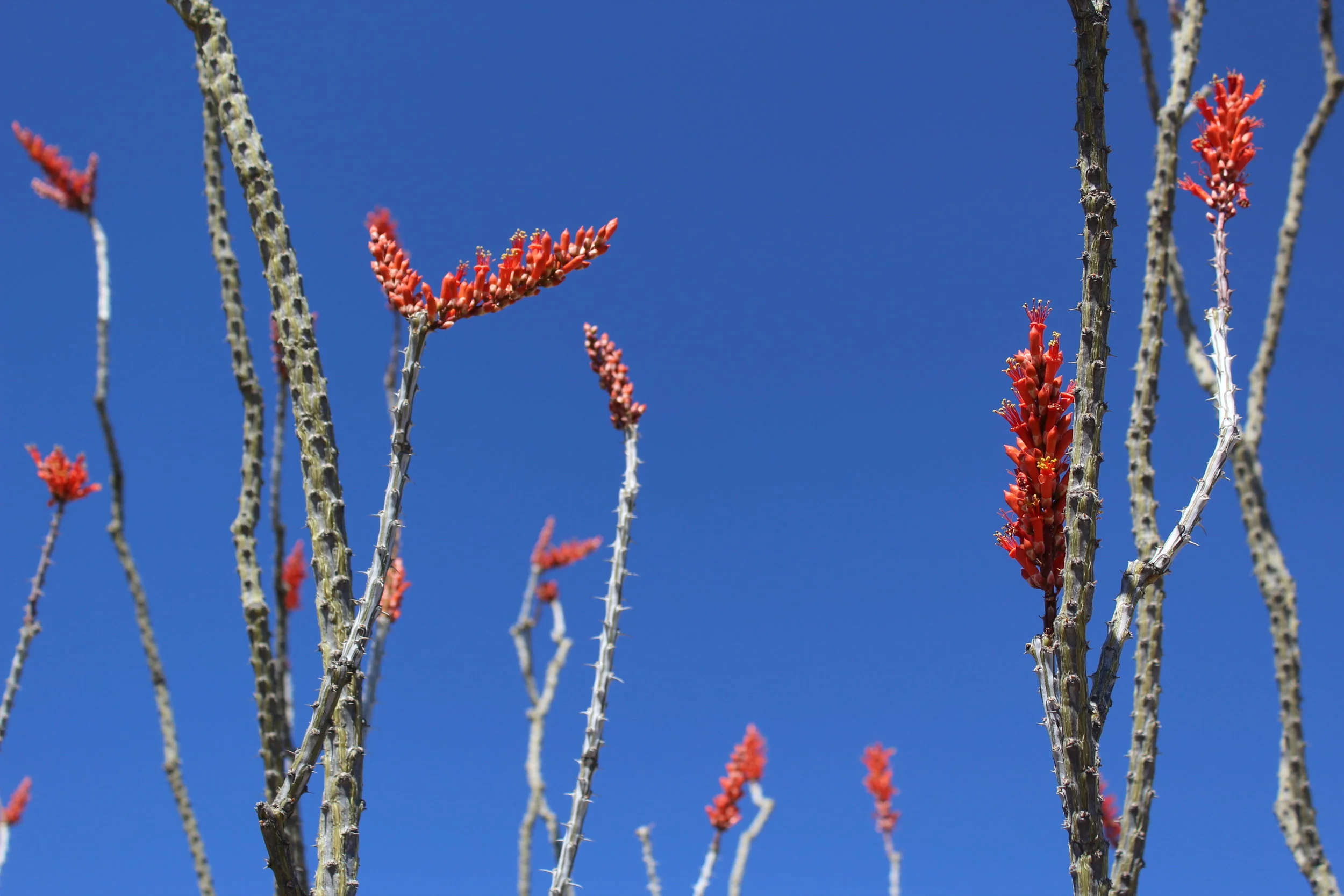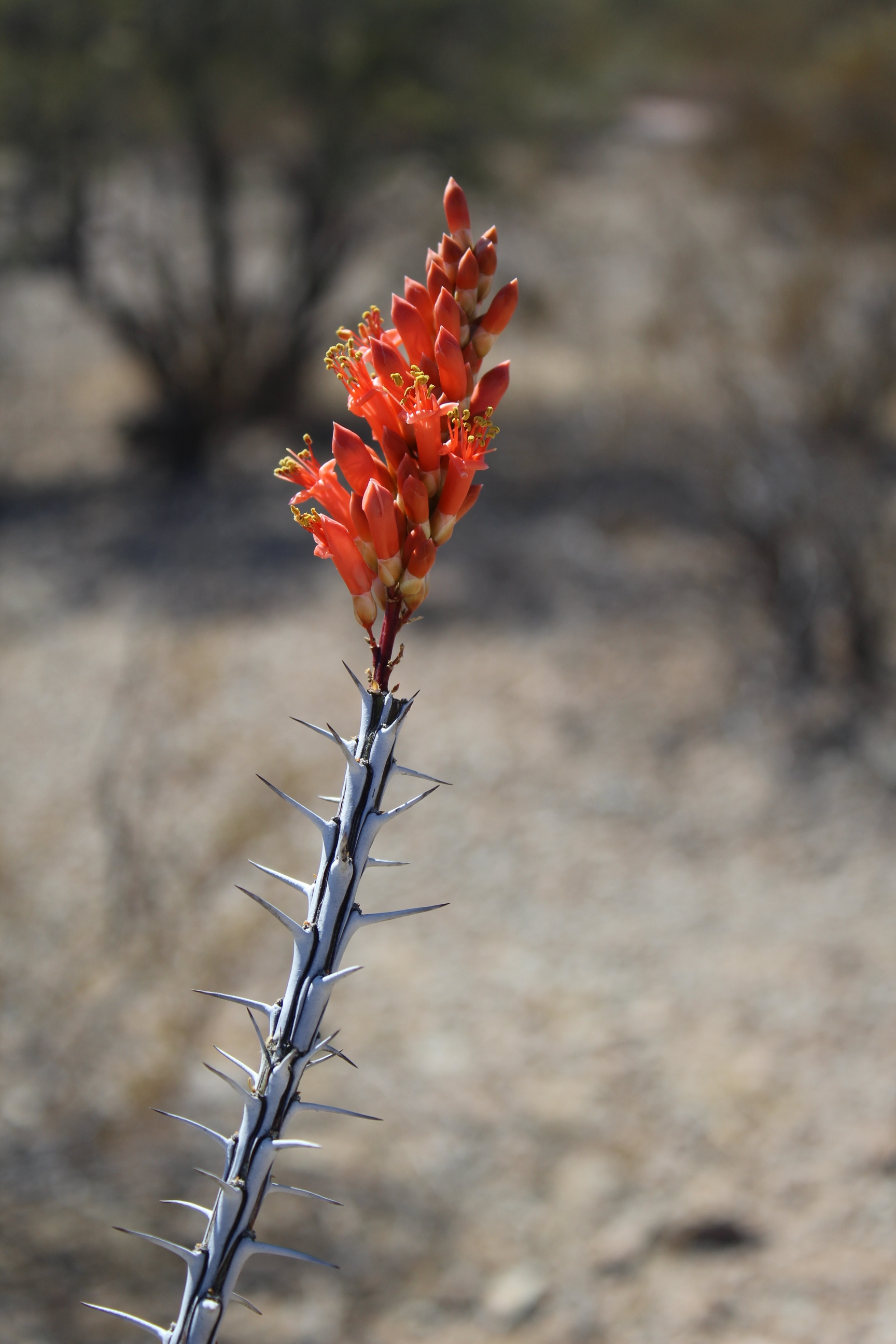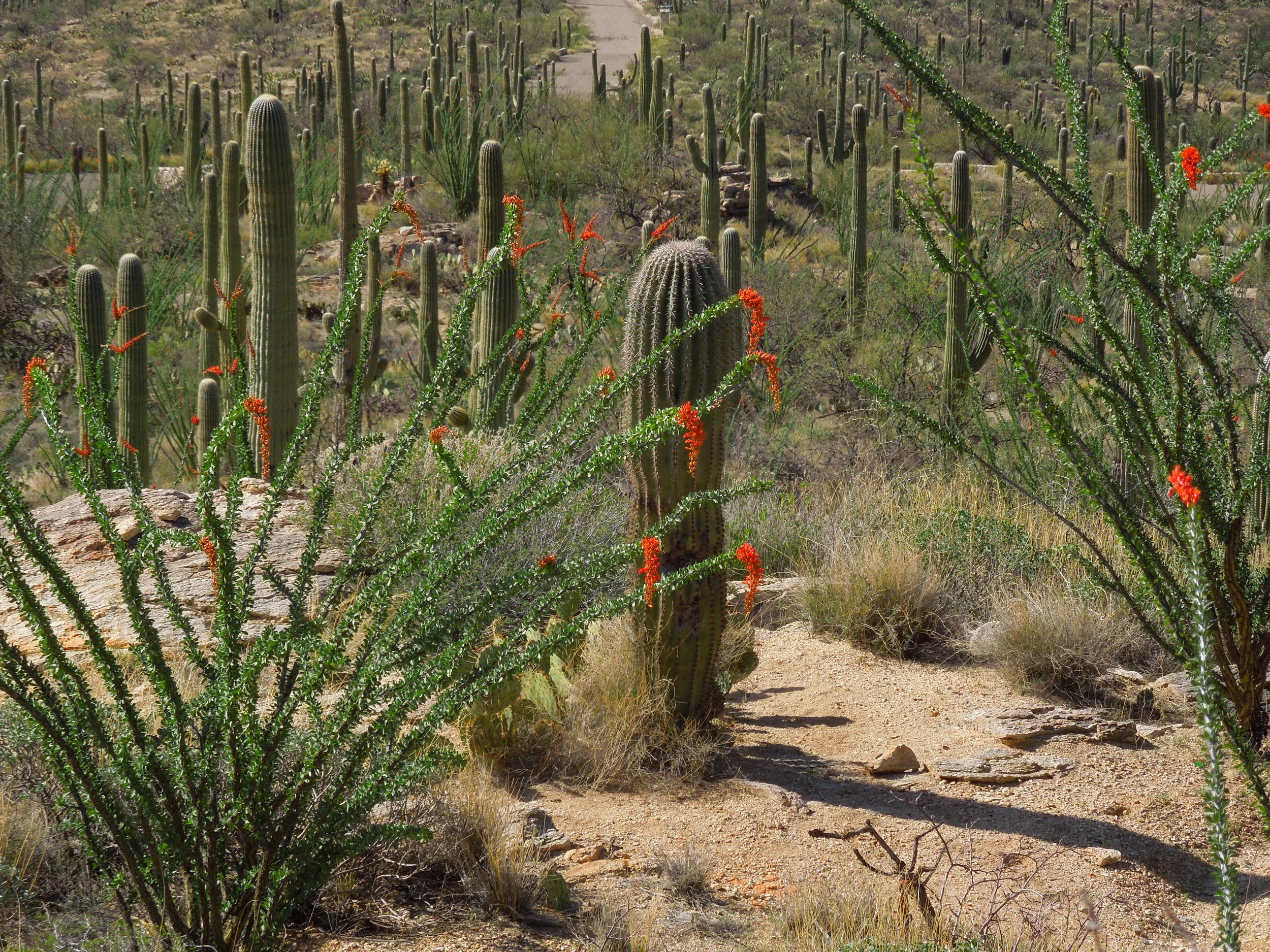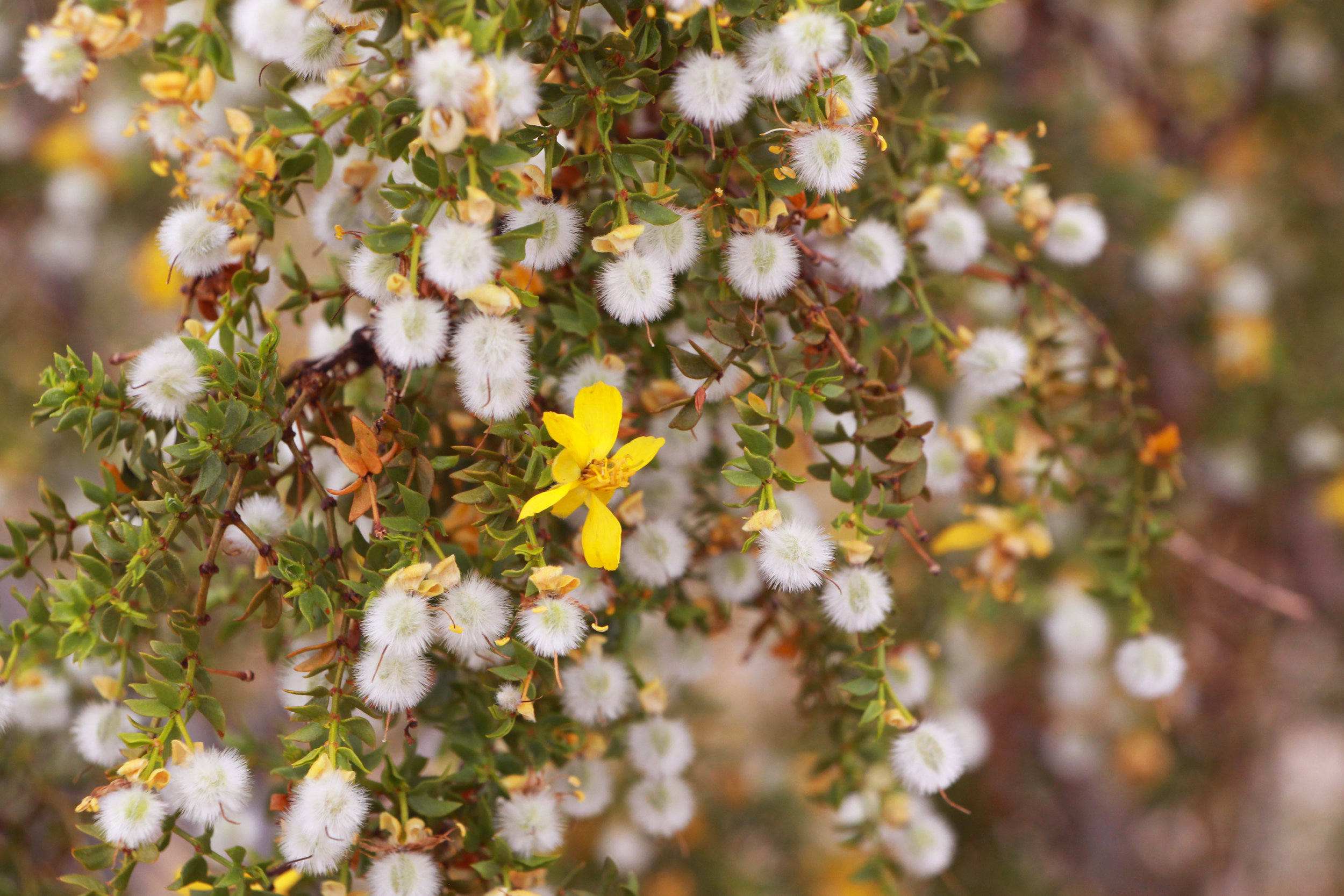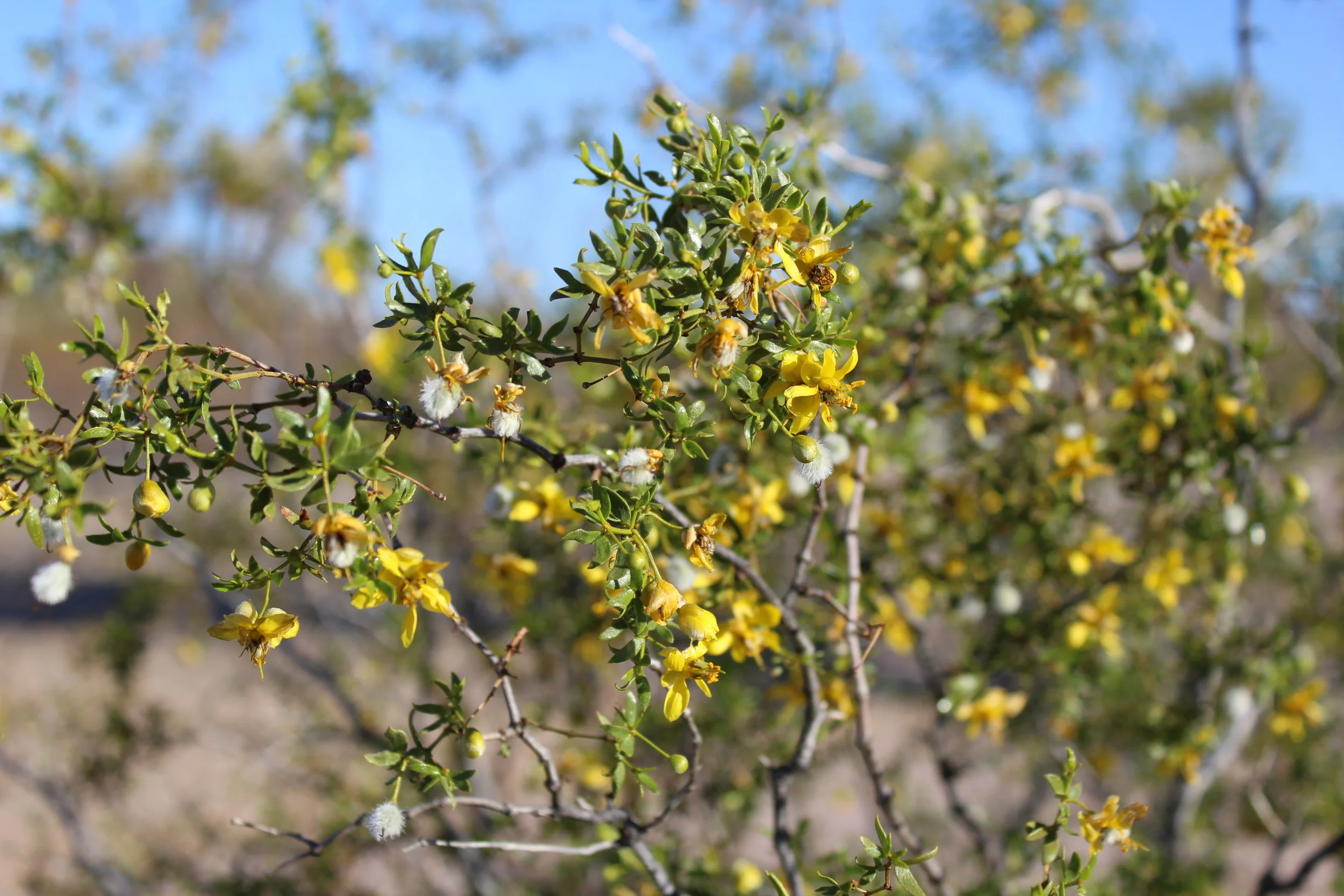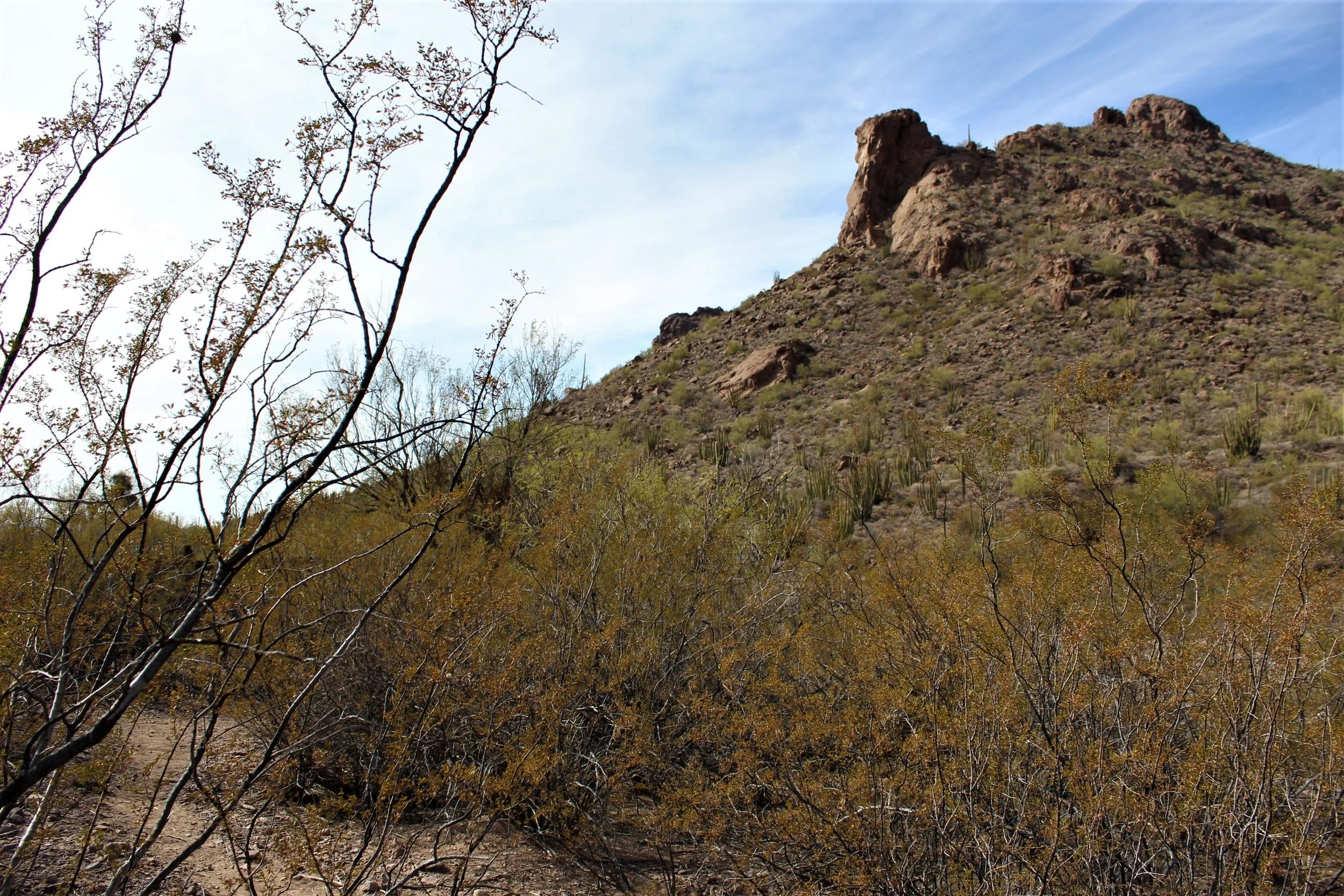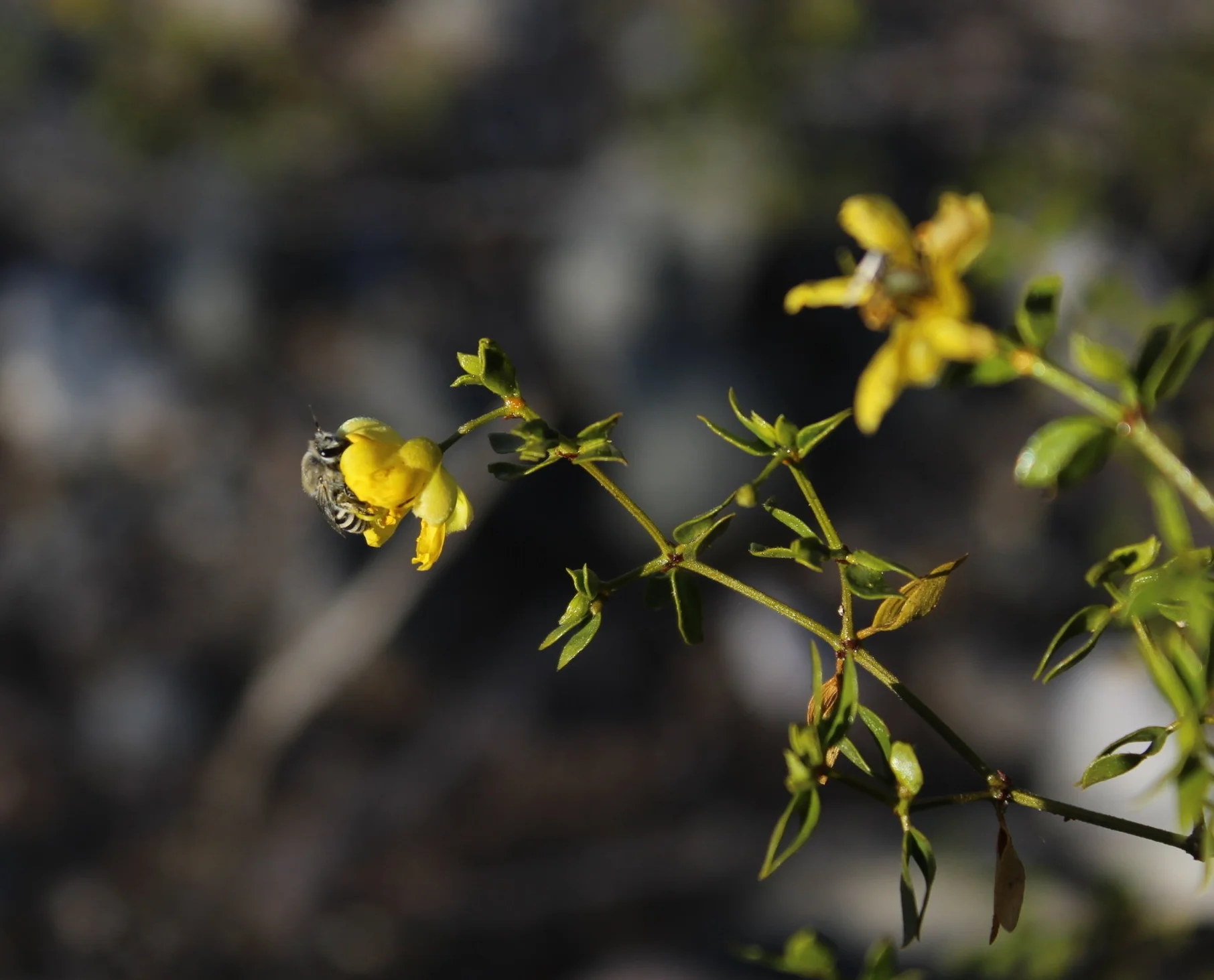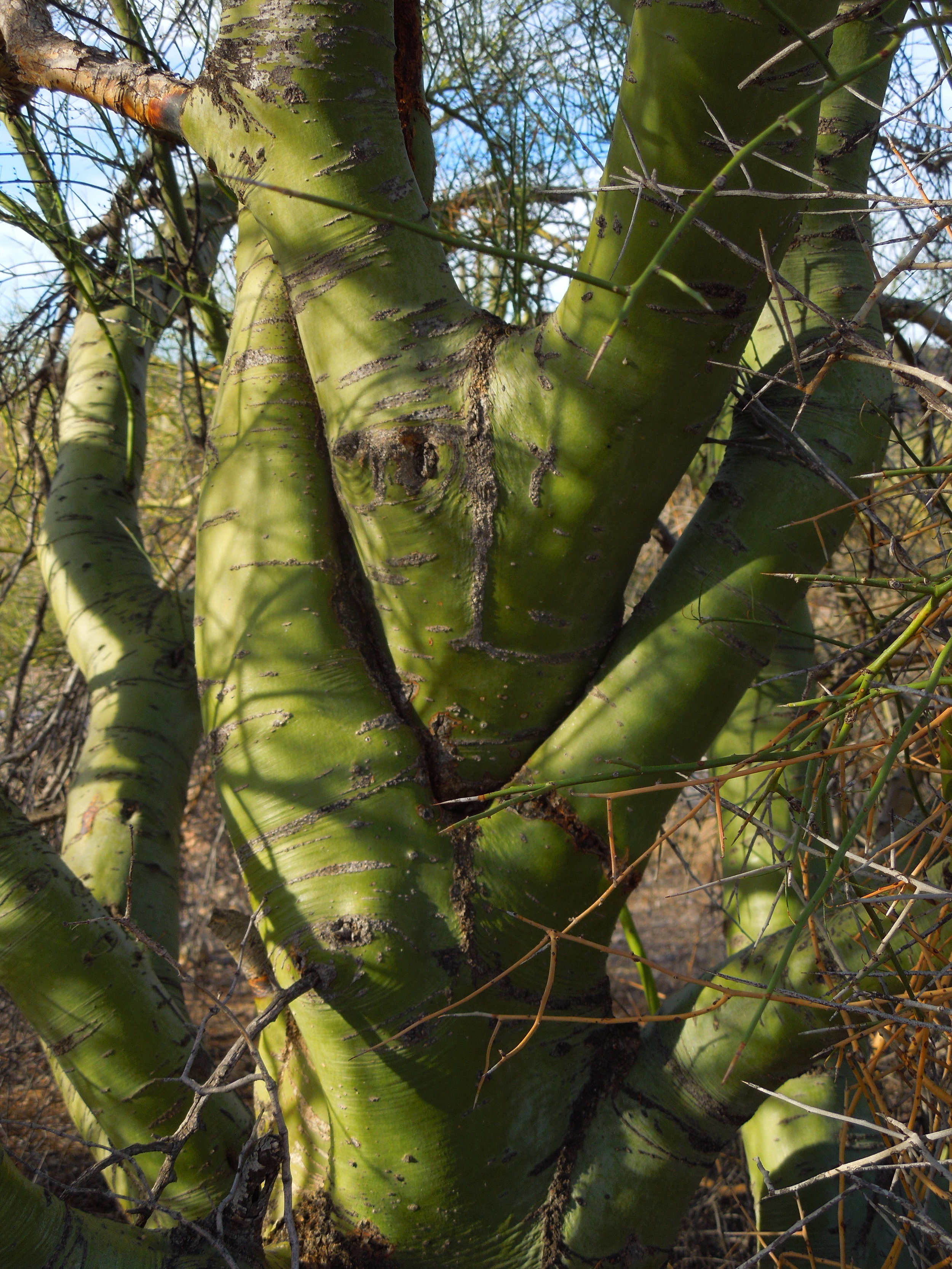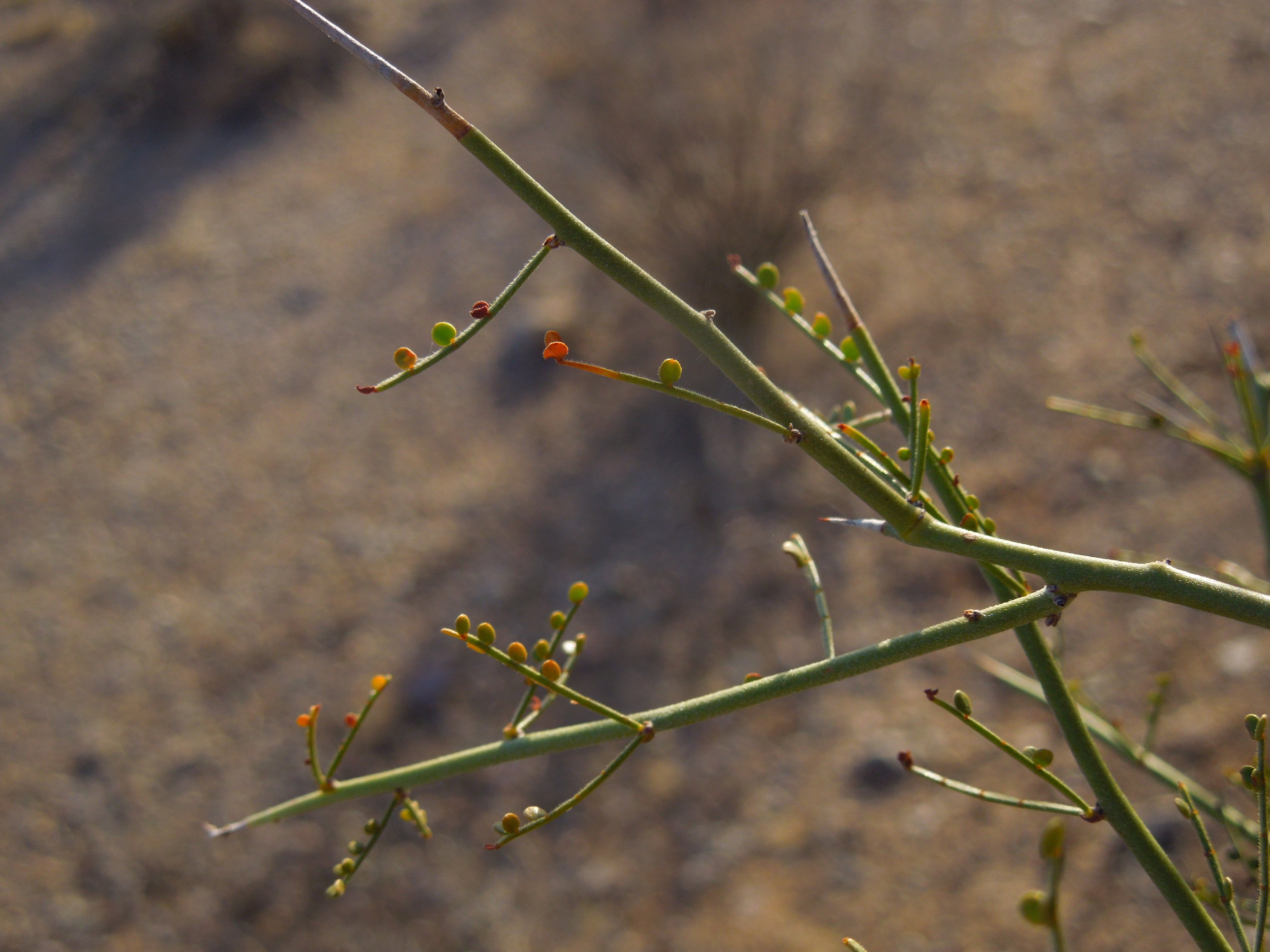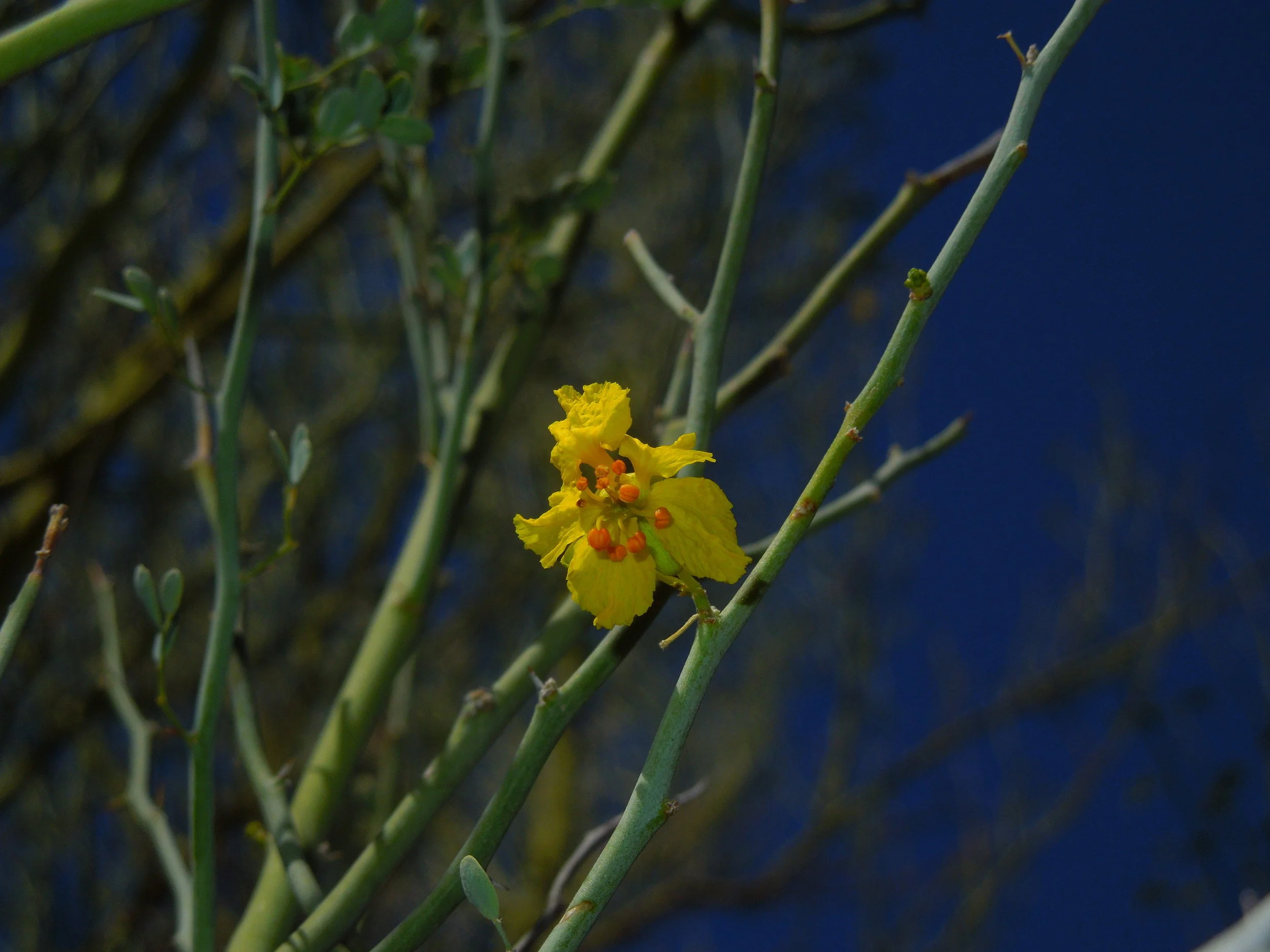Sure, parasites can be a drain on their host, but for those parasites whose entire life depends on a living host, it doesn’t pay to kill. Such is the case for the desert mistletoe (Phoradendron californicum). These plants simply can’t live without the water and nutrients they receive from their host trees. But what happens when more than one mistletoe infects a single tree? One would think that supporting multiple mistletoes would be a dangerous drain on the host tree. However, recent research based in the Sonoran Desert suggests that desert mistletoe has a trick up its stems that involves a bit of communication with its neighbors.
Desert mistletoe isn’t completely reliant on its host for all of its nutritional needs. Though lacking leaves, the desert mistletoe is fully capable of photosynthesis via its tangled mass of green stems. Most of what desert mistletoes extract from their host consists of water and other nutrients they can’t acquire themselves. However, desert mistletoes rarely operate alone. Thanks to their nutritious berries and the territorial habits of the birds that disperse them, multiple mistletoe individuals often wind up parasitizing the same tree.
Heavy infestations may sound like a death sentence for the host tree, especially in the harsh Sonoran climate. However, by manipulating the mistletoe loads on various trees and observing how mistletoes and their hosts respond, researchers have discovered that mistletoes can apparently sense their neighbors and alter their behavior accordingly.
During dry periods, trees become stressed for both water and nutrients. For mistletoes growing on a stressed tree, it doesn’t make much sense from an evolutionary standpoint to increase their demand on the host during these times. Instead, mistletoes growing on stressed trees actually increased the amount of photosynthesis they perform without increasing the amount of water they extract from their host. By altering their metabolism in this way, the mistletoes do not add any extra burden to their already stressed host tree but nonetheless maintain their own fitness.
Amazingly, the situation got even more interesting when researchers experimentally removed some mistletoes. Somehow, depending on their position on their host tree, some remaining mistletoes can sense that their competitors had been removed. When this happens, they don’t go into overdrive and start exacting a greater share of resources from their host. Instead, the remaining mistletoe appear to sense that they no longer have to compete as much and adjust their water and nutrient uptake in such a way that actually allows their host to benefit as well.
Certainly these findings generate more questions than they answer. First, how do mistletoes sense their neighbors? Given their direct links with the host vascular tissues, they could be sensing signals from other parasites that way. There is also the potential for airborne signal detection as well. Also, do mistletoes behave differently when growing near related individuals versus strangers? What researchers have ultimately uncovered is a fascinating coevolutionary system in desperate need of more attention.
Further Reading: [1]

